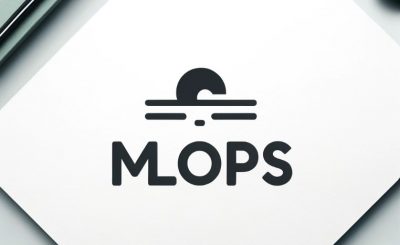Table of Contents
Introduction
In today’s data-driven world, small businesses increasingly recognize the value of leveraging machine learning (ML) to drive growth and innovation. However, implementing and managing ML models can be challenging without the right strategies and tools. This is where MLOps (Machine Learning Operations) comes into play. MLOps is the practice of combining ML system development and operations to streamline the deployment and maintenance of machine learning models. This article will explore the best MLOps strategies for small businesses, providing practical examples from basic to advanced.
Understanding MLOps
What is MLOps?
MLOps is a set of practices that aim to deploy and maintain machine learning models in production reliably and efficiently. It bridges the gap between data science and operations, ensuring seamless integration and continuous delivery of ML models.
Why is MLOps Important for Small Businesses?
For small businesses, MLOps offers several benefits, including:
- Enhanced Collaboration: Facilitates better communication between data scientists and IT operations.
- Efficiency: Automates repetitive tasks, allowing teams to focus on high-value activities.
- Scalability: Ensures that ML models can scale with business growth.
- Reliability: Reduces the risk of model failures and improves overall system reliability.
Basic MLOps Strategies for Small Businesses
Start with Clear Objectives
Before diving into MLOps, it’s crucial to define clear objectives. What are the specific problems you want to solve with ML? Having well-defined goals will guide your strategy and ensure alignment with business needs.
Leverage Open-Source Tools
For small businesses with limited budgets, open-source tools provide a cost-effective way to implement MLOps. Some popular options include:
- TensorFlow Extended (TFX): An end-to-end platform for deploying production ML pipelines.
- Kubeflow: A Kubernetes-based platform for deploying, scaling, and managing ML workflows.
- MLflow: An open-source platform for managing the ML lifecycle, including experimentation, reproducibility, and deployment.
Implement Version Control for Data and Models
Just as software development benefits from version control, so does ML development. Use tools like Git to version your code, and consider specialized tools like DVC (Data Version Control) for versioning data and models. This practice ensures reproducibility and facilitates collaboration.
Intermediate MLOps Strategies
Automate Model Training and Deployment
Automation is a core principle of MLOps. Implementing CI/CD (Continuous Integration/Continuous Deployment) pipelines can streamline the process of training and deploying ML models. Popular CI/CD tools for MLOps include Jenkins, GitLab CI, and CircleCI.
Steps to Automate Model Training and Deployment
- Set Up a CI/CD Pipeline: Define the stages of your pipeline, including data preprocessing, model training, and deployment.
- Use Automated Testing: Ensure your models are rigorously tested before deployment.
- Monitor the Pipeline: Continuously monitor the pipeline to detect and address issues promptly.
Use Containerization for Portability
Containers, such as Docker, provide a lightweight and consistent environment for running ML models. Containerization ensures that models run the same way in development, testing, and production environments, reducing deployment issues.
Benefits of Containerization
- Consistency: Ensures the same environment across different stages of the ML lifecycle.
- Portability: Easily move containers between different platforms and environments.
- Scalability: Simplifies scaling ML models across multiple servers.
Advanced MLOps Strategies
Implement Advanced Monitoring and Logging
Monitoring and logging are critical for maintaining ML model performance. Implementing advanced monitoring solutions can help detect anomalies, track model performance, and provide insights into model behavior.
Key Metrics to Monitor
- Accuracy: Measure the correctness of your model’s predictions.
- Latency: Track the time it takes for your model to make predictions.
- Resource Utilization: Monitor CPU, GPU, and memory usage to ensure efficient resource management.
Adopt a Model Governance Framework
Model governance involves the policies and procedures that ensure ML models are used responsibly and ethically. It includes aspects like model validation, fairness, and compliance with regulations.
Components of a Model Governance Framework
- Model Validation: Regularly validate models to ensure they meet performance standards.
- Fairness: Assess models for biases and ensure they provide fair outcomes.
- Compliance: Ensure models comply with relevant regulations and industry standards.
Frequently Asked Questions
What is the main goal of MLOps?
The main goal of MLOps is to streamline and automate the deployment and maintenance of ML models in production, ensuring they are reliable, efficient, and scalable.
How can small businesses benefit from MLOps?
Small businesses can benefit from MLOps by enhancing collaboration between data science and IT teams, improving efficiency through automation, ensuring scalability of ML models, and increasing the reliability of their systems.
What are some popular tools for MLOps?
Popular tools for MLOps include TensorFlow Extended (TFX), Kubeflow, MLflow, Jenkins, GitLab CI, CircleCI, and Docker.
Why is version control important in MLOps?
Version control is important in MLOps because it ensures reproducibility, facilitates collaboration, and helps track changes in code, data, and models, reducing the risk of errors and improving the overall quality of ML projects.
How does containerization help in MLOps?
Containerization helps in MLOps by providing a consistent and portable environment for running ML models, reducing deployment issues, and simplifying the scaling of models across multiple servers.
Conclusion
Implementing the best MLOps strategies can significantly enhance the efficiency, reliability, and scalability of machine learning initiatives in small businesses. From leveraging open-source tools and automating model deployment to advanced monitoring and model governance, these strategies provide a comprehensive approach to managing the ML lifecycle. By adopting these practices, small businesses can unlock the full potential of their data and drive innovation in their operations.
Embracing MLOps is not just about technology; it’s about fostering a culture of collaboration and continuous improvement. Start with clear objectives, utilize the right tools, and continuously monitor and optimize your processes. With these strategies, small businesses can achieve remarkable success in their machine-learning endeavors. Thank you for reading the DevopsRoles page!
